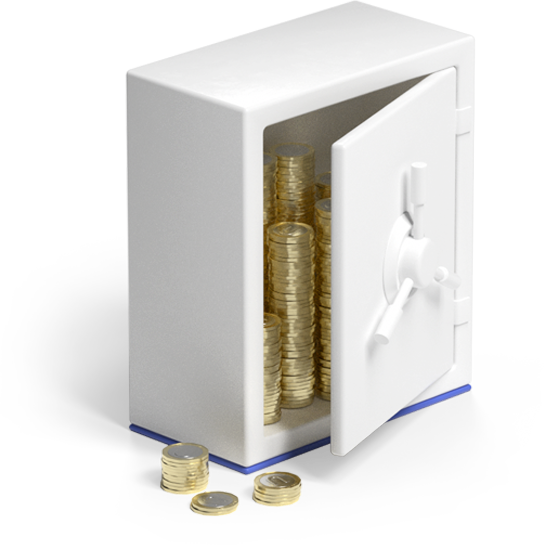What Is A Good Rental Yield?
However experienced you are in the buy-to-let investment market, rental yield is a critical factor that you can’t ignore.
By Jon Howe4/28/21

What Is A Good Rental Yield?
However experienced you are in the buy-to-let investment market, rental yield is a critical factor that you can’t ignore. Indeed, if you are wanting to get involved in property development or you are an experienced investor with different types of property and different investment strategies in your portfolio, rental yield can be a determining factor that dictates whether a property is worth buying at all, or whether it is for buy-to-let purposes or buy-to sell.
Essentially, rental yield – or property yield as it is sometimes known – is integral to differentiating between a good or bad property investment, and therefore, understanding rental yield itself and then what is a good rental yield, is an important starting point from which you can start to assess your next move.
What is rental yield?
Rental yield is a widely-used figure which gives you a percentage indicator of what a likely income return on a property is going to be. In simple terms, you take the annual rental income you expect to receive on a property and divide it by the total amount invested, and then multiply it by 100 to get a percentage. So, for example:
- You buy a property for £120,000
- You expect to receive £500 per month in rent = £6,000
- So your rental yield is (6,000 ÷ £120,000) x 100 = 5%
This figure is known as a gross yield. A net yield is a more accurate figure because it takes into account all the costs associated with a property investment, so not just the purchase price but also the various fees and charges and any refurbishment costs involved in getting the property on the rental market.
These may sometimes be difficult to estimate when attempting to gauge the viability of a project, but they are important in justifying an investment and, of course, can reduce the rental yield percentage.
There are elements of guesswork involved in estimating costs, and sometimes the monthly rent you will charge, but you can research local markets and it is important that these figures are as accurate as possible. You are doing yourself no favours by trying to save or earn yourself a few pounds in your head that aren’t realistic.
Why is rental yield so important?
Looking in pure mathematical terms, you can’t afford to have more monthly expenditure in an investment than income, or in some cases you can’t even afford to break even. So rental yield is the clearest indicator of the value of an investment.
There are lots of hidden or unforeseeable costs involved in property development, so you also need to factor these into an investment as a contingency plan. These could be possible periods of having no tenants, additional refurbishment costs or maintenance issues you hadn’t planned for.
An expected rental yield allows you to make a judgement on the viability of a project and at certain times, or in certain circumstances, you may be able to accommodate a lower rental yield than usual. This can only really be assessed on an individual case basis. But in essence, rental yield gives you an idea what your immediate income is going to be, and in most cases with a buy-to-let investment, this is crucial to your short and long term survival as a property investor.
What factors can affect buy-to-let rental yield returns?
On the face of it, this is quite simple, ie. the amount you invest in a property and the amount you earn in return. Of course the price you pay for a property can be dictated by many things; the type of property, the age and condition of the property, the location of the property and the amenities around it and the status of the economy and the property market at the precise time you are looking to purchase.
Looking at net rental yield, the costs and fees you pay out can also vary quite considerably and be hard to predict, but have a huge influence on the eventual rental yield. Refurbishment costs can include re-wiring, plumbing, a new boiler, a new kitchen or bathroom, new carpets and decorating, even work in the garden and a conservatory or decking. Other costs include stamp duty and legal fees which vary by property.
You may drop lucky by agreeing to a good mortgage deal which offers you favourable terms, particularly if you can put a healthy deposit down as capital. This will reduce your monthly costs and bring the rental yield up, but you still have to factor this initial capital investment into the viability of the project.
In terms of income, this really depends on the market segment you are aiming at, ie. who are you looking at renting the property to? Is this students, young professionals or a family? And what is the typical rental income for that market in that area? Are you being realistic with your rental demands? This has to be as accurate as possible, because otherwise, you are only kidding yourself and potentially masking a bad investment as a good one.
Other factors that are important when buying property also have to be kept in mind. Obviously, you want some capital growth in any property, even if buy-to-let returns is your primary income stream. In the buy-to-let market, rental yield is more of a factor because you need to be earning income straight away.
A poor rental yield can lead to cash flow problems and wipe away any capital you have saved up, leaving you to bank on market growth by the time you sell the property, which can be a few years away so doesn’t help your cash flow now, and may not arrive at all.
What is a good rental yield?
The general rule is that a rental yield needs to be somewhere between 5-8% to make a property investment worth considering. Areas of the country that generate towards or above 10% are not uncommon, but this is often based on short term factors where an opportunist investor might drop lucky.
Anything below a rental return of 5% might not generate enough cash flow to cover all of your costs and therefore won’t justify your investment. You may find this is different in an area of high demand, where you know you can sell the property and get a good capital growth, this therefore might make a lower rental yield worth considering. Or, as mentioned earlier, you may find yourself with lower monthly costs and this can compensate for a lower monthly income, so something around 4-5% may be OK.
A property investor who is looking to buy-to-sell may only be looking at short term rental income – for a variety of reasons – and therefore isn’t too concerned if rental yield is low for the few months that they own the property. They will make their money from selling the property, so rental yield is only a factor for the longer term buy-to let market.
An investor also needs to factor in changes to the market when assessing what is a good rental yield. Right now mortgage interest rates are very low, but that can change, so a rental yield of, say, 6%, might suddenly not be enough. Also, the desirability of an area can improve (or indeed reduce) and other costs are also variable such as insurance, maintenance and management fees. You need to plan for this uncertainty and build maybe a 1% buffer into the rental yield, which gives you some breathing space you can live with if things go wrong.
When looking at a specific property market, this can also dictate whether a certain rental yield % is attractive or not. For example, a steady rental yield of 6% may appear more desirable if tenants are more stable and regular, such as with student properties.
These tend to be cheaper to purchase and the student market is not so demanding in terms of interior fittings, so your refurbishment costs are lower. If located strategically, tenant demand will be very strong for student properties and tenancies will last at least a year, whereupon there are always more students to replace them. So a lower rental yield than you would normally consider, might be viable.
Consequently, marketing a rental property to young professionals or families carries more costs, as these properties are generally more expensive, in better areas and are refurbished to a higher standard, so you might be looking for a higher rental yield %.
It may be tempting to increase the monthly rent in order to increase the rental yield, but you need to ask yourself, is the tenant getting more for their rent? Is it a realistic rent? You shouldn’t price yourself out of the market just to achieve an acceptable rental yield, this is a backwards way of looking at it and could lead to no tenants and real financial trouble.
You can also fall upon an area where house prices are traditionally low, but there is a high demand. Fashionable areas sometimes create a perfect storm of factors that all come together at the same time, areas of the north such as Liverpool, Manchester and Leeds are currently experiencing this, and you can find good rental yields here. Meanwhile, the traditionally strong London market is pretty stagnant as house prices are still high and the market is struggling to shift properties.
Is rental yield the most important factor in property investment?
Yes and no. In simple terms, rental yield is very important, but you shouldn’t use it as the sole indicator of the viability of an investment. You could have a rental yield in excess of 10%, but that might be because the property is cheap and it won’t rise in value. So you might struggle to sell the property and you won’t make your money back. You also have to consider tenant demand – or a lack of it - in an area or for a type of property, which has the same effect of masking the real value of a rental yield.
So it shouldn’t be the case that you simply aim for the highest rental yield you can find, because that might not tell the full story about that property.
Summary: a good rental yield is probably at least 7%
As with many investment decisions, you need to balance everything up and apply it to your individual circumstances and ambitions. Therefore, a happy medium of a 7% rental yield is probably the ideal scenario to aim for, but contingency allowance is critical and like any property investment, you need to have an exit strategy and retain an eye on it, ie. am I going to be tied to this property longer than I want to be?
Property investment is unique and very popular because it has two sources of income return; rental income and capital growth, this dictates that you should maintain a balance in your investments if you are entering the buy-to-let market. Buy-to-let returns can realise short and long term ambitions and are very much dictated by the state of the market, so rental yield gives you an indicator of your immediate returns, but capital growth on a property is still a critical factor long term.
Take a look at our other articles




